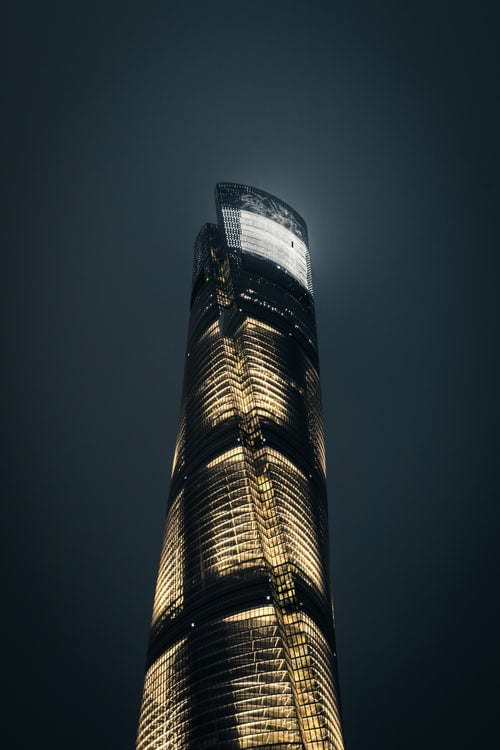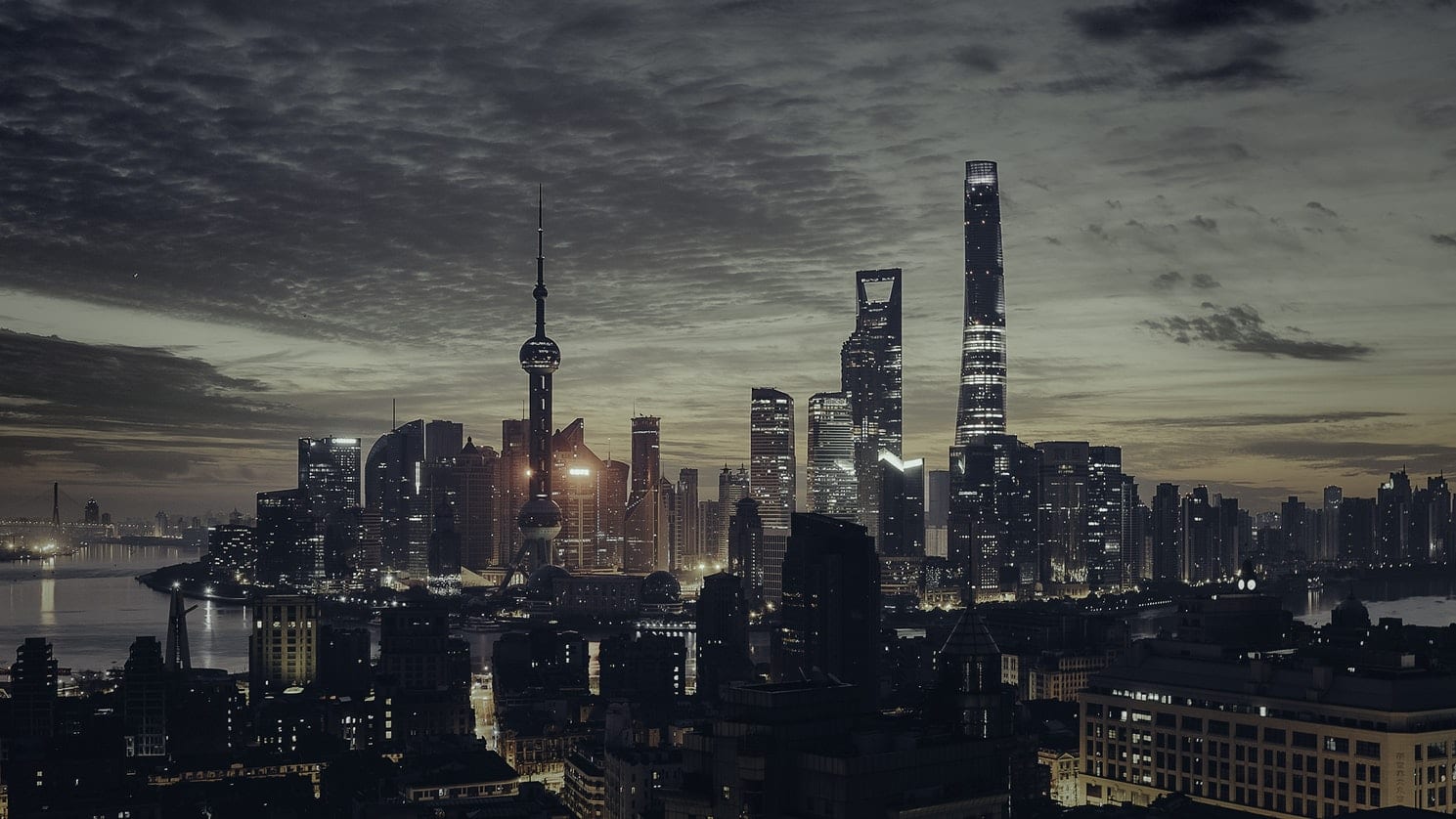The Shanghai Tower: Thinking About Cities
Recently our planet crossed a significant threshold. For thousands of years the majority of the human population lived in rural areas, practicing agriculture. With the advent of the industrial revolution more and more people are moving to urban areas. Currently about 55 percent of the world’s population lives in cities (Meredith, 2018). This is the first time in history that more humans live in cities than rural areas. As we move further into the twenty first century, more and more of the human population will live in urban areas. The UN predicts that by 2050, 66 percent of the human population will live in cities (UN, 2018). As more and more people move to the cities, a greater proportion of the work available will be found in the cities, causing more people to move to the cities.
As the population in cities grows, city planners and governments will need to find new ways to house and support the people living in their cities. As these cities grow they will use up more land, more resources, and more energy. This positive feedback loop leads to disconnects. Those living in the cities often don’t feel the effects of their overconsumption. This growth will lead to a more unsustainable world unless and effort is made to make this growth more sustainable.
This requires us to rethink cities. Sustainable development and green architecture provide us with a way to do just that. “Green, or sustainable, building is the practice of creating and using healthier and more resource- efficient models of construction, renovation, operation, maintenance and demolition,” (Ragheb et al., 2015). Green architecture gives us the opportunity to transition our world to a more sustainable model by rethinking the ways in which we build our cities. Green architecture gives us a chance to internalize the externalities associated with city living. Green architecture also thinks about sustainability on multiple scales: environmental, economical, and societal.
“Environmentally, green architecture helps reduce pollution, conserve natural resources and prevent environmental degradation. Economically, it reduces the amount of money that the building’s operators have to spend on water and energy and improves the productivity of those using the facility. And, socially, green buildings are meant to be beautiful and cause only minimal strain on the local infrastructure,” (Ragheb et al., 2015).
 One of the best example of green architecture, and the potential it has to change the world, is the Shanghai Tower. At 632 meters tall, the Shanghai Tower is the second tallest building in the world. The tower is one of three mega-tall buildings located in the Lujiazui District in Shanghai (Xia et al., 2010). But what makes the tower so impressive is not its massive size, but the sustainable design of the building. The creation of the Shanghai Tower gives us a model with which to plan the cities of the future.
One of the best example of green architecture, and the potential it has to change the world, is the Shanghai Tower. At 632 meters tall, the Shanghai Tower is the second tallest building in the world. The tower is one of three mega-tall buildings located in the Lujiazui District in Shanghai (Xia et al., 2010). But what makes the tower so impressive is not its massive size, but the sustainable design of the building. The creation of the Shanghai Tower gives us a model with which to plan the cities of the future.
The Shanghai Tower was designed by Gensler, an American architectural firm. All of the major stakeholders in the Shanghai Tower, of which there are three, are government owned conglomerates. Due to China’s unique blend of capitalist and communist forms of government, while the idea of the tower is incredibly capitalist, the stakeholders in the tower are communist, governmental organizations. Projects like the Shanghai tower can only exist when coalitions of governmental and corporate entities work together. The combined financial power of governments and corporate conglomerations are the way forward for green architecture. Only when these super-rich entities realize it is in their best interest to create a more sustainable future we will have the capital we need to make that future happen. The investors in the Shanghai tower realized that green architecture is both economically and environmentally sustainable. The Shanghai Municipal Government also played in important role in the creation of the Tower. Municipality rules state that 33 percent of the site be green space. As a result, a third of the land the tower is on is landscaped green space (Xia et al., 2010).
The tower is divided into several zones, making it essentially a city in the sky. There are zones for offices, shops, cultural venues, and hotels. Various design features lead to the exceptional sustainability. These included the shape of the building, the glass structure, its climate control, and energy systems.
The shape of the tower has a great impact on its sustainability. The tower is twisted, and gets narrower the closer you get to the top. The tower also has rounded corners. These design features ensure that the tower is able to withstand the strong storms that occur in Shanghai. Additionally, the design allows the building to use many fewer costly materials. The final building had a 32 percent reduction in its material use. These choices are economically sustainable too saving the builders 50 million US dollars (Lau, 2015).
Arguably the most interesting feature of the tower is also the one which makes it the most sustainable. The tower has what is called a double skin façade. The inner skin is glass. Outside of this skin is an atrium that is landscaped. And finally, on the outside of this atrium is another glass skin.
Lighting is one of the greatest energy drains in most buildings. By wrapping the Shanghai Tower in two layers of glass, the architects of the building cut the buildings lighting needs dramatically. Natural light not only reduces the lighting costs, it can also improve the emotional state of the tower’s residents. The ventilation allowed by the outer glass skin also reduces the need for air conditioning in the hot Shanghai summers. The natural cooling and lighting also makes the tower more economically sustainable. Not only is the tower using less energy, and therefore has less of a carbon footprint, but it also costs less to maintain (Lau, 2015).
 The inclusion of the landscaped atriums is also socially beneficial. The atriums provide a place for the workers in the offices to escape to. They can go to the atriums and feel as though they are outside. They allow for the workers to socialize and interact with nature (Xia et al., 2010). This emphasis on connecting architecture, the city, and nature is a key concept in green architecture and sustainable development.
The inclusion of the landscaped atriums is also socially beneficial. The atriums provide a place for the workers in the offices to escape to. They can go to the atriums and feel as though they are outside. They allow for the workers to socialize and interact with nature (Xia et al., 2010). This emphasis on connecting architecture, the city, and nature is a key concept in green architecture and sustainable development.
The tower also uses various other design features to increase its sustainability. The building uses a ground source heat pump (geothermal heating) to help heat and cool the building. Wind turbines on the top of the building create electricity, reducing the buildings electrical bill. The building also collects grey water and rain water. It then re purposes the water to be used again.
The Shanghai Tower is a prime example of green architecture. It uses various design elements in order to be more environmentally friendly and use less energy. These features cause the building to cost less to both build and maintain. The building is also designed to be pleasant to the people who work in and interact with the building. When governments and private investors put their money and resources towards green building projects, great things can happen.
Green architecture requires many cross scalar changes for it to become feasible across the globe. Governments need to create financial incentives to encourage developers to build green. They also need to create policies that ensure that buildings meet stricter environmental standards. And local governments, like the one in Shanghai, need to have similar environmental standards. Organizations must also be careful not to put all of their faith in technological solutions like green architecture. They must also continue to work to alleviate poverty and narrow disconnects across the board. Innovation is not the entirety of the way forward, but it is an integral part. They must also be sure these technological fixes do not lead to overconsumption, as they did in the case of automobiles.
Green architecture gives us a way to transition to a world with more sustainable cities. As more and more of the world population moves to urban areas, we must focus our attention toward building green cities. The future of the human race is in the cities, and if we want to save the planet, we need to save our cities.
“Around 2.5 Billion More People Will Be Living in Cities by 2050, Projects New UN Report | UN DESA Department of Economic and Social Affairs.” United Nations, United Nations, 16 May 2018.
Lau, Gina Letizia. “Sustainable High-Rise Construction in Shanghai.” Technico Lisboa, 2015.
Meredith, Sam. “Two-Thirds of Global Population Will Live in Cities by 2050, UN Says.” CNBC, CNBC, 17 May 2018, www.cnbc.com/2018/05/17/two-thirds-of-global-population-will-live-in-cities-by-2050-un-says.html.
Ragheb, Amany, et al. “Green Architecture: A Concept of Sustainability.” Procedia, 16 Oct. 2015, pp. 778–787.
Xia, Jun, et al. “Case Study: Shanghai Tower.” Council on Tall Buildings and Urban Habitat, 2010, pp. 11–19.
